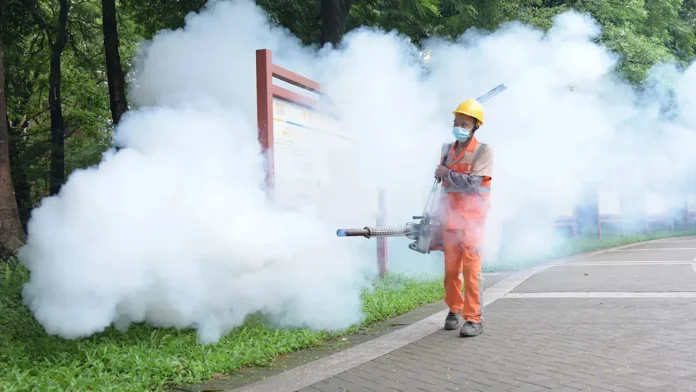Chinese authorities are stepping up efforts to contain a fast-growing outbreak of chikungunya, a mosquito-borne virus that has infected over 7,000 people, mostly in the southern city of Foshan, Guangdong Province.
Officials are deploying a mix of high-tech tools and strict public health measures in what appears to be China’s largest recorded outbreak of the disease.
Drones are being used to locate pools of standing water where mosquitoes breed, while fines of up to 10,000 yuan (about $1,400) have been introduced for residents who fail to eliminate outdoor water sources. Electricity cuts have also been threatened as part of enforcement.
Chikungunya, which causes fever, fatigue, and often severe joint pain, is spread by infected mosquitoes. While it’s not new globally—being first identified in Africa in the 1950s—this marks the first time it has spread widely in mainland China.
In response, Chinese state television has shown widespread fumigation efforts in residential areas, office buildings, and even construction sites. Health workers are also experimenting with using fish that eat mosquito larvae and even larger mosquitoes to hunt virus-carrying insects.
Adding to the urgency are extreme weather conditions, particularly unusually heavy rainfall and high temperatures, which have created ideal breeding conditions for mosquitoes.
Hospitals in Foshan are reportedly keeping infected patients for at least one week to control further transmission, even though the disease is not spread between humans. Authorities had briefly considered home quarantine measures before scrapping them.
International attention has followed the outbreak. The U.S. Centers for Disease Control and Prevention (CDC) has issued a Level 2 travel advisory for China, especially for the Guangdong region. The CDC advises travelers to take extra precautions such as using insect repellent, wearing long sleeves, and staying in screened or air-conditioned spaces.
Pregnant women and those with underlying health conditions have been urged to reconsider travel to affected areas. Although chikungunya is rarely fatal, it can lead to prolonged joint pain and complications for newborns if a mother is infected near the time of birth.
Chinese officials say the outbreak is under control, with the number of new cases slowly declining. “The current situation is preventable, treatable, and controllable,” said Foreign Ministry spokesperson Guo Jiakun.
Still, the measures reflect Beijing’s zero-tolerance approach to infectious disease outbreaks, shaped by its experience with SARS in 2003 and COVID-19. From spraying clouds of disinfectant to national-level emergency protocols, China is clearly taking no chances.

